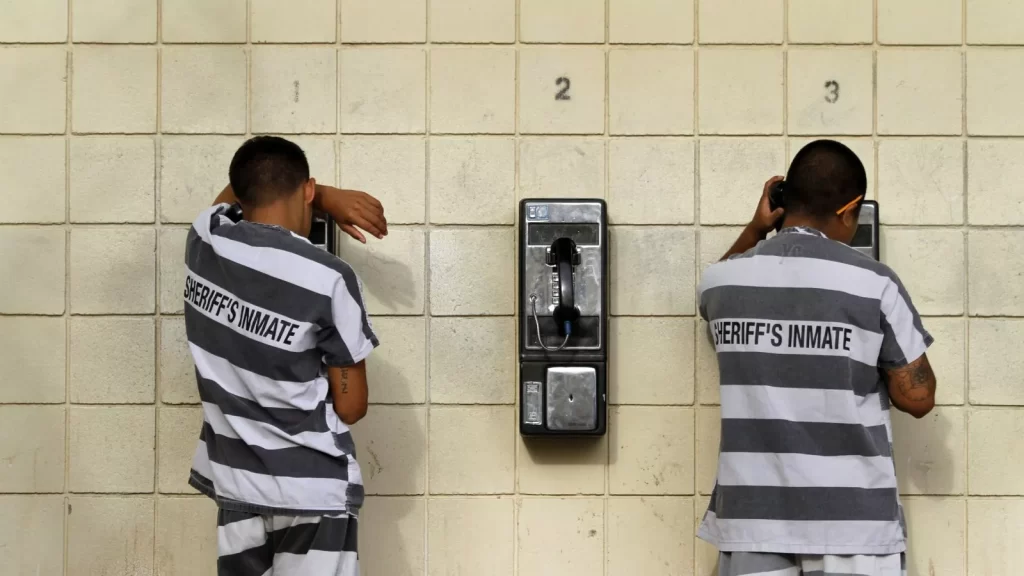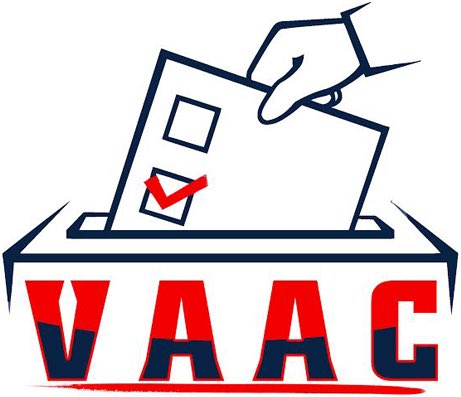New rules, the result of the bipartisan passage of the Martha Wright-Reed Fair and Just Communications Act, are a massive victory in the decades-long fight for prison and jail communication justice.

First Published by the Prison Policy Initiative. Written by Wanda Bertram, July 18, 2024
On July 18, 2024, the Federal Communications Commission voted to implement several new regulations on phone and video calling services in prisons and jails.
As required by the 2022 Martha Wright-Reed Fair and Just Communications Act, the FCC laid out new price caps that prisons, jails, and their telecom providers must abide by, significantly lowering the existing caps which were set in 2021. The agency also made a number of long-sought reforms that will bring critical relief to families of incarcerated people and reduce incentives for bad policy in prisons and jails.
The new caps on phone and video calling rates in prisons and jails
The FCC voted to set price caps for phone calls of 6¢ per minute for prisons and large jails, 7¢/minute for medium-sized jails, and slightly more for small and “very small” jails. This move lowers the existing caps by more than half, a tremendous step forward that will save the families of incarcerated people many millions of dollars every year.
| Facility type | Current phone rate caps (per minute) | New phone rate caps (per minute) | New video rate caps (per minute) | Effective date |
|---|---|---|---|---|
| Prisons | $0.14 | $0.06 | $0.16 | Jan. 1, 2025 |
| Large jails (1,000+) | $0.16 | $0.06 | $0.11 | Jan. 1, 2025 |
| Medium jails (350-999) | $0.21 | $0.07 | $0.12 | Apr. 1, 2025 |
| Small jails (100-349) | $0.21 | $0.09 | $0.14 | Apr. 1, 2025 |
| Very small jails (0-99) | $0.21 | $0.12 | $0.25 | Apr. 1, 2025 |
The FCC also laid down the first rate caps for video calling — a quickly growing industry, which we put on the national radar with our 2015 report — though it should be noted that these are interim rates as the agency decides on permanent regulations. Prisons will be required to keep video calling rates at or below 16¢/minute, and jails are required to keep rates between 11¢/minute and 25¢/minute, depending on facility size. While this is an intermediate step, it stands to substantially lower the cost of video calls, for which families currently pay about 25¢ a minute on average.
Additionally, the FCC finally prohibited the companies from charging additional fees for “ancillary services” like making a deposit to fund an account, and now will just require the companies to recover those costs within their per-minute charge for phone or video service. This technical-sounding change ends a long debate around the best way to eliminate some of the industry’s dirtiest tricks that shortchange both the families and the facilities.
The FCC itself recognized in 2015 that fees were “the chief source of consumer abuse and allow circumvention of rate caps” when it set caps on five types of fees and prohibited all the others. Since then, the FCC has struggled to keep up with some providers’ attempts to circumvent the fee caps, so with this order the FCC will lower costs to the families while offering more simplicity and consistency to the companies and the facilities.
The FCC’s new rule on ancillary fees also effectively blocks a practice that we have been campaigning against for years: companies charging fees to consumers who choose to make single calls rather than fund a calling account, and deliberately steering new consumers to this higher-cost option in order to increase fee revenue. (Our 2019 State of Phone Justice report offers a visual depiction of this reprehensible practice.)
Other important financial regulations in the FCC’s order
The FCC’s order takes the momentous step of prohibiting companies from paying most kickbacks — or in the industry’s and FCC’s terminology, “site commissions” — to contracting agencies. Commissions, as we have written before, are a major factor driving up the costs of prison and jail telecom services: Counties and states choose their telecom provider based on which one will offer the highest commission payments, and companies offset the cost of paying these kickbacks by raising their rates. The new rules appear to restrict site commissions in all of their many forms, including “donations” of free technology or other gifts to the facilities.
There is an important caveat to this reform: Companies can still make payments to agencies totaling up to 2¢ for every calling minute, provided they can show that these are reimbursements for costs the facilities themselves are paying for “used and useful” calling services. (These commissions must be built into companies’ rates, within the caps listed above.) In other words, commission payments are not completely eliminated, but the biggest perverse incentive they exert in the prison and jail telecom market has been greatly curtailed.
Alternative pricing plans
In another departure from their previous regulatory approach, the FCC voted to allow companies to offer “alternative pricing plans” for phone and video calling. Over the past several years, the agency has required companies to price their services in terms of rates per minute, preventing abusive pricing systems like “flat rate calling” that charge consumers a fee for calls regardless of length (or that make the first minute cost much more than subsequent minutes). This time around, the FCC is allowing alternative pricing plans — with some key caveats.
Per the new rules — and in keeping with advocates’ strong recommendations — companies can only offer alternative pricing plans that they can show generate cost savings for consumers as a group and individually. Critically, the intent of the new rules is to allow the companies and facilities to experiment with new pricing structures but not to circumvent the existing rate caps.
New accessibility and consumer protection rules
Another important issue in the FCC’s rulemaking concerns incarcerated people with disabilities. The agency ruled that telecom providers must make “advanced communications services” (i.e. audio or video communications services and electronic messaging), and any equipment associated with those services, accessible for people with disabilities except when doing so is “not achievable.” In cases where it is not achievable, providers must ensure that their services and infrastructure can integrate with “existing peripheral devices” commonly used by people with disabilities.
Additionally, the FCC issued strong permanent rules to keep the companies from seizing funds that consumers leave behind in their accounts when a loved one is released from jail or prison. The new rules require the companies to make reasonable efforts to return funds when they know that a person has been released or when funds have gone unused for 180 days. If the companies are unable to return these funds, they must turn over those funds to the state’s unclaimed asset programs that hold funds in trust for consumers. This is a significant victory that the Prison Policy Initiative has long sought, because many companies would simply seize these unused funds as a secret form of profit, which in the case of industry giant GTL, averaged to more than $1.2 million per month of consumer funds seized by phone providers just because they could.
Conclusion
Advocates following these developments at the FCC should also be aware of upcoming opportunities to make the new rules even better. The FCC has released a “Notice of Proposed Rulemaking” (see paragraph 600 of the draft order) pertaining to a number of topics, most notably video calling and “quality of service” issues. Advocates should act soon to ensure the FCC hears about excessive video calling charges, problems with dropped calls, and other technical issues. (The deadline for comments is 30 days after the order is published in the Federal Register, which probably will be at least a week after today’s vote.)
The FCC’s order is a massive victory for incarcerated people, their families, and their allies who have spent decades fighting the exploitative prison telecom industry. Of course, it does not mean the long fight for communications justice is over: Companies looking for ways to exploit consumers still have plenty of options for doing so, including bundling regulated services into contracts with unregulated services that charge unfair and unreasonable rates (like electronic messaging and tablet features). But the order delivers on the promise of the Martha Wright-Reed Act and accomplishes many of the key goals that we and other advocates have been campaigning on for years.
Footnotes
- As of this writing, the FCC has not published its final order. This analysis is based on the draft order the FCC released on June 27, 2024. When the final order is released, we will update this briefing with a link to it. ↩
- As our 2013 report found, the practice of charging “ancillary fees” outside of the per-minute rate added up to almost 40% of what incarcerated people and their families were spending on phone calls. (The companies invented these fees because commissions paid to the facilities were originally a percentage of the per minute rate, and creating fees was a way for the companies to get extra income from the families without sharing it back to the facilities.) ↩
Wanda Bertram is the Communications Strategist at the Prison Policy Initiative. (Other articles | Full bio | Contact)

Leave a Reply